Have you ever wondered what exactly an EICR report entails?

Well, let me shed some light on this crucial document that holds the key to electrical safety and compliance.
Understanding the intricacies of an EICR report goes beyond just ticking boxes; it unveils a world where the safety of occupants and the integrity of electrical systems converge.
Join me in exploring the depths of EICR reports, where a deeper understanding awaits those seeking to ensure a secure environment for all.
Understanding the EICR Report
Understanding the EICR report involves a comprehensive analysis of electrical installations to identify defects, damages, and potential hazards. The EICR benefits property owners by ensuring electrical safety and aiding in property maintenance. Its importance lies in highlighting compliance with regulations, which is crucial to avoid fines and ensure the safety of occupants. The inspection is a fundamental aspect of maintaining a secure electrical environment, as it detects any issues that could compromise safety. Compliance regulations mandate that these inspections are conducted regularly to uphold safety standards and prevent accidents.
The EICR report is an essential tool that provides detailed insights into the condition of electrical installations. It serves as a roadmap for necessary improvements and repairs, ensuring that the property meets the required safety standards. By following the recommendations outlined in the EICR report, property owners can guarantee the longevity and functionality of their electrical systems, contributing to a secure and compliant living or working environment.
Significance of Regular EICR Checks
Regular EICR checks play a critical role in maintaining electrical safety standards and preventing potential hazards in properties. Ensuring compliance with regulations, these inspections help mitigate risks associated with faulty electrical installations. The frequency of EICR checks is vital to uphold property maintenance and uphold electrical safety standards. Inspecting every 3 to 5 years is recommended to detect any emerging issues promptly and ensure the safety of occupants.
| Key Aspects | Importance |
|---|---|
| Electrical safety | Ensures the safety of occupants and prevents electrical accidents. |
| Risk prevention | Identifies potential hazards early, reducing the likelihood of incidents. |
| Property maintenance | Helps maintain the integrity of the property’s electrical infrastructure. |
| Compliance standards | Ensures adherence to regulatory requirements and industry best practices. |
| Inspection frequency | Regular checks every 3 to 5 years are essential for proactive risk management. |
Procedure and Duration of EICR
The procedure for conducting an Electrical Installation Condition Report (EICR) involves a thorough inspection and testing of the electrical installation. Inspection timing varies based on the size and age of the installation, operational requirements, and the number of distribution boards. Larger installations may require a site survey to determine the appropriate inspection duration.
Testing procedures include checking circuits by disconnecting the main supply and assessing the integrity of the installation, identifying any damage to sockets and switches. The EICR report provides recommendations for improvements to ensure electrical safety and compliance with relevant standards. It summarizes the condition of the electrics, outlines any non-compliance with British Standards, and assigns codings indicating the installation’s state.
Compliance with these standards is crucial for maintaining electrical safety and avoiding potential hazards. Adhering to recommended inspection intervals every 3 to 5 years is essential to ensure the ongoing safety and efficiency of the electrical installation.
Insights Gained From EICR Reports

From the detailed examination conducted during an Electrical Installation Condition Report (EICR), valuable insights regarding the condition and safety of the electrical installation can be derived. Safety recommendations are provided based on the identification of potential hazards such as faulty wiring, overloaded circuits, or outdated equipment.
Fault detection is a key aspect, pinpointing issues like loose connections, damaged outlets, or inadequate grounding that may lead to electrical hazards. Assessing property compliance with regulations ensures that the electrical system meets the necessary standards for safe operation.
Understanding and addressing these aspects are crucial for fulfilling landlord obligations to provide a safe living or working environment. EICR reports play a vital role in highlighting areas that require attention, prompting timely action to rectify any identified issues and prevent potential risks to occupants.
Knowing Your Service Provider: Plant and Safety Ltd
When considering service providers for essential compliance services in the UK, Plant and Safety Ltd stands out as a nationally recognized entity within the LB International Group. Their service quality is evident through adherence to strict accreditation standards, ensuring that all work meets regulatory requirements.
Customer feedback consistently highlights satisfaction with the thoroughness and professionalism of their inspections. Plant and Safety Ltd boasts industry expertise, with a team of experienced professionals well-versed in conducting detailed assessments.
Moreover, they stay at the forefront of technological advancements, incorporating the latest tools and techniques to enhance the accuracy and efficiency of their services. Choosing Plant and Safety Ltd guarantees a comprehensive and reliable approach to compliance inspections, backed by a solid reputation for excellence in the field.
EICR Regulations and Landlord Requirements
Shifting focus to EICR Regulations and Landlord Requirements, a primary consideration is the legal obligations that landlords must adhere to regarding electrical safety in properties. Landlords are obligated to meet national electrical safety standards, necessitating inspections and tests every 5 years to ensure compliance. Following the inspection, a detailed report outlining the results and the date of the next inspection must be obtained.
It’s crucial for landlords to provide this report to tenants and local authorities promptly. In cases where remedial work is indicated, landlords must swiftly address the identified issues to maintain safety standards. Compliance with these regulations not only ensures the safety of occupants but also upholds property maintenance standards.
EICR Codes and Remedial Measures
In EICR reports, the classification codes such as C1, C2, FI, and C3 are used to indicate the condition of the electrical installation and the necessary remedial work. These codes play a crucial role in identifying and addressing electrical hazards to ensure safety compliance. A C1 classification signifies a danger present that requires immediate attention, while a C2 indicates a potentially dangerous situation that needs urgent remedial actions. The FI code highlights further investigation needed without immediate risk. On the other hand, a C3 classification suggests improvements are recommended for enhanced safety but don’t pose immediate risks.
Upon receiving EICR inspection findings, landlords and property owners must promptly address the identified issues to maintain a safe environment. Remedial actions for the different classification codes are essential to rectify any electrical hazards and ensure compliance with safety regulations. It’s imperative to take these codes seriously and prioritize the necessary remedial measures outlined in the EICR report to uphold electrical safety standards.
Frequently Asked Questions
Can EICR Reports Be Used as Evidence in Legal Disputes or Insurance Claims Related to Electrical Safety?
EICR reports can serve as crucial evidence in legal disputes and insurance claims regarding electrical safety. They provide expert testimony on compliance standards and safety regulations, supporting cases with precise technical details for effective resolution.
Are There Any Specific Considerations or Requirements for Conducting EICR Inspections in Heritage or Listed Buildings?
When conducting EICR inspections in heritage or listed buildings, specific considerations include building materials, conservation guidelines, periodic testing for historical structures, preservation challenges related to faulty wiring, ensuring structural integrity, compliance with safety regulations, and exploring remediation options.
How Can Homeowners or Landlords Proactively Maintain Electrical Safety Between Scheduled EICR Inspections?
To maintain electrical safety proactively, I recommend periodic visual checks for damaged cords, plugs, and switches. Update old wiring, use surge protectors, and schedule regular maintenance by a qualified electrician to mitigate risks and ensure safety.
Are There Any Emerging Technologies or Trends in the Field of Electrical Safety Inspections That Could Impact the Future of EICR Reports?
Smart technology advancements like remote monitoring, predictive maintenance, and data analytics are transforming electrical safety inspections. Automation solutions streamline processes, enhance accuracy, and enable proactive maintenance, shaping the future of EICR reports toward efficiency and effectiveness.
What Are the Potential Implications or Consequences if an EICR Report Identifies Issues That Are Not Promptly Addressed by the Property Owner or Landlord?
If an EICR report identifies issues not promptly addressed by the landlord, safety consequences, property damage, legal implications, tenant safety risks, and compliance issues may arise. Failure to act promptly can lead to severe penalties and compromised safety.
Conclusion
In conclusion, the EICR report stands as a crucial tool in ensuring electrical safety and compliance within properties. Through meticulous testing and inspection, potential hazards and defects are identified, paving the way for necessary remedial measures to be undertaken.
Regular EICR checks are imperative in upholding the integrity of electrical installations and maintaining a secure environment for all occupants. Trusting a reputable service provider like Plant and Safety Ltd is essential in adhering to regulations and meeting landlord requirements.



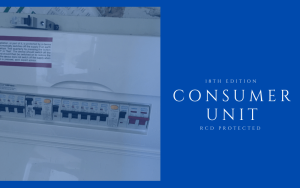
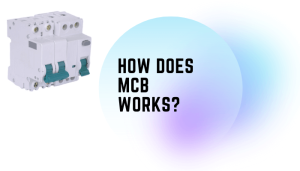

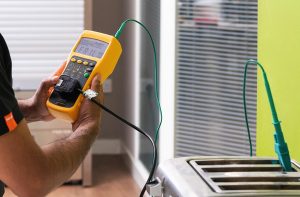
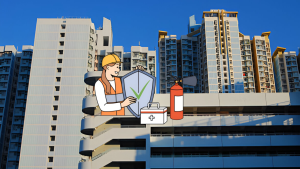
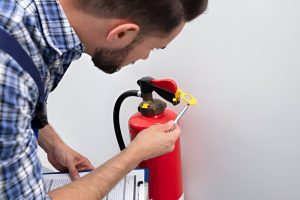
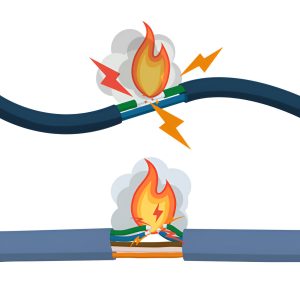

1 thought on “What Is an Eicr Report”
Your blog is a constant source of inspiration for me. Your passion for your subject matter shines through in every post, and it’s clear that you genuinely care about making a positive impact on your readers.